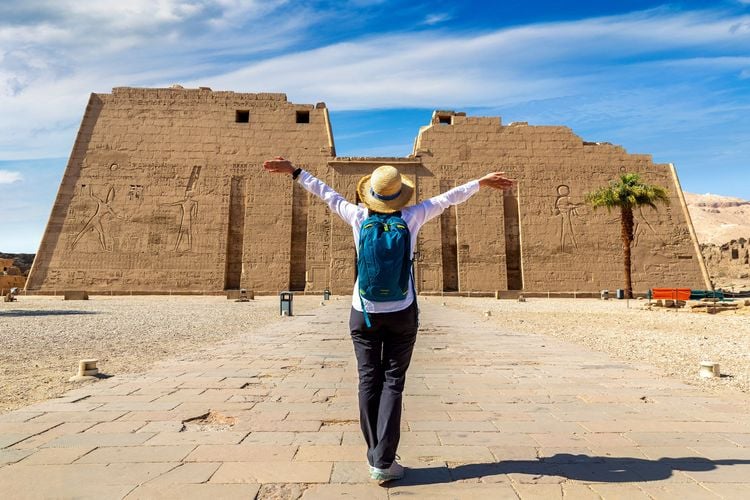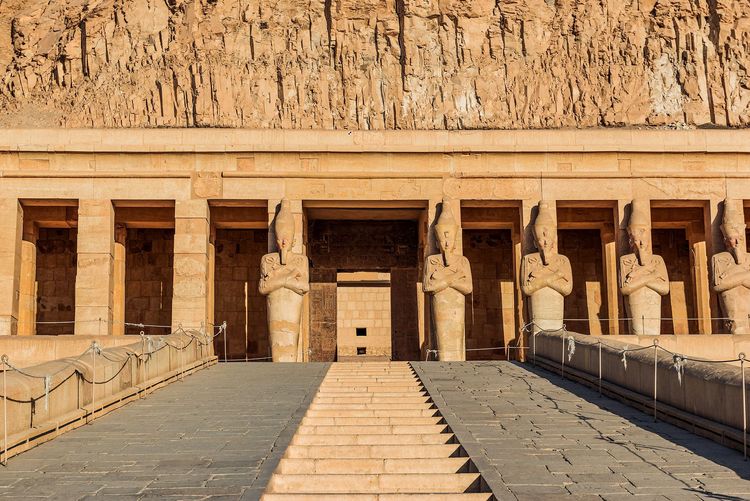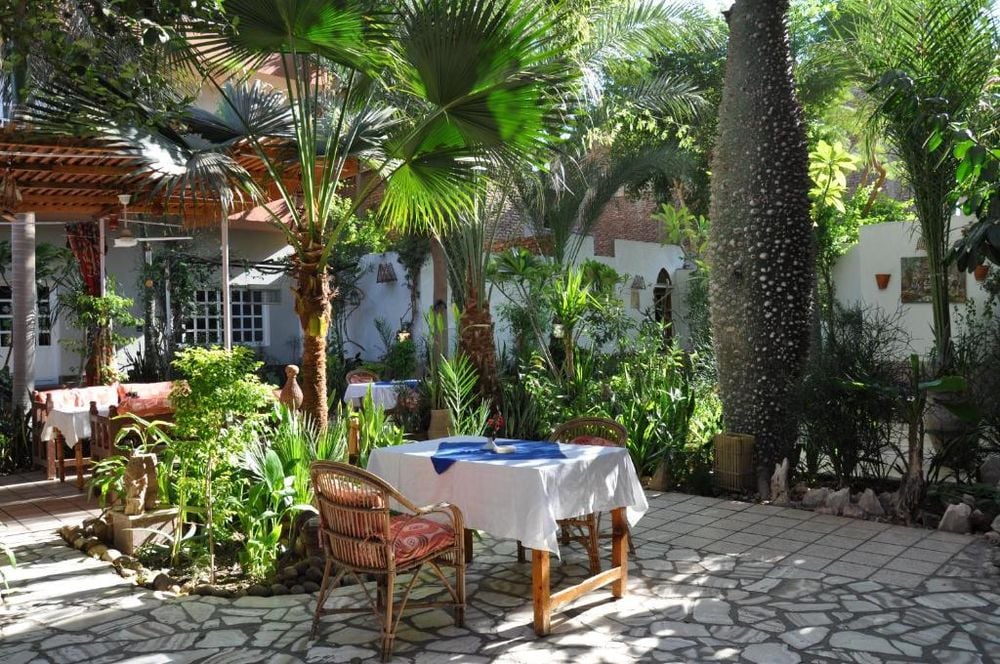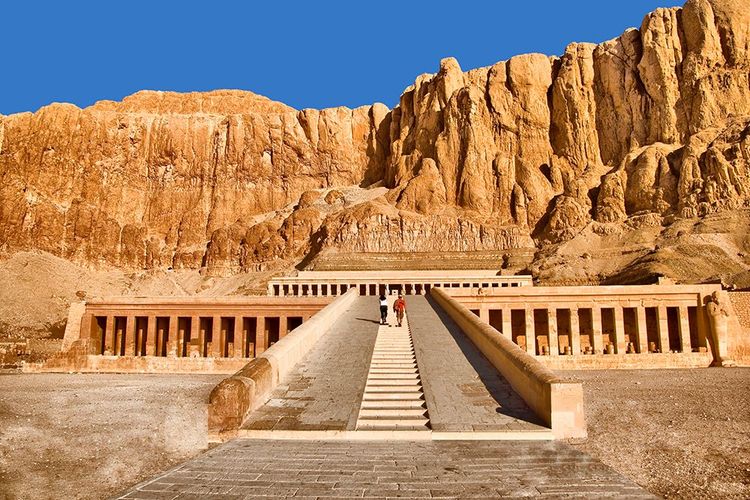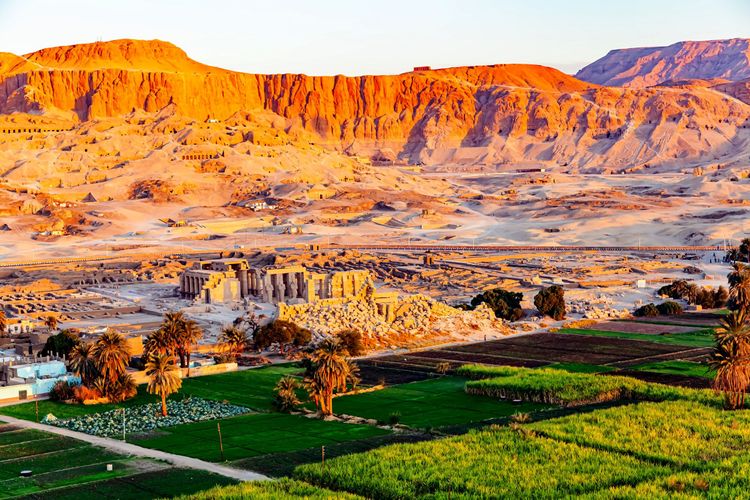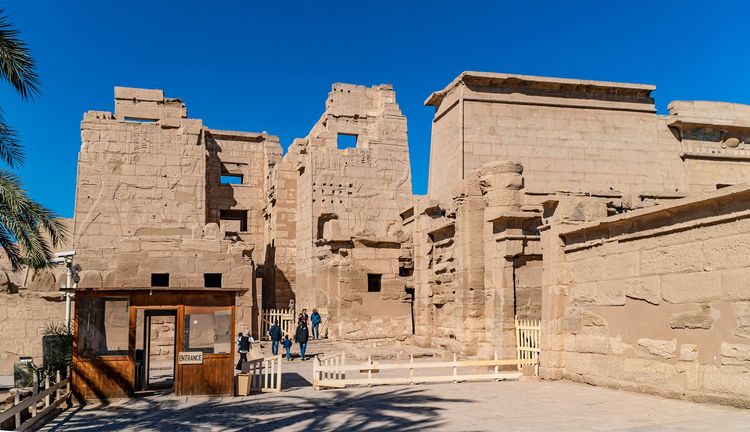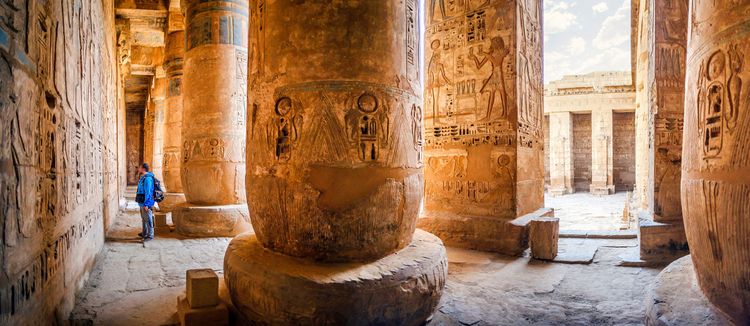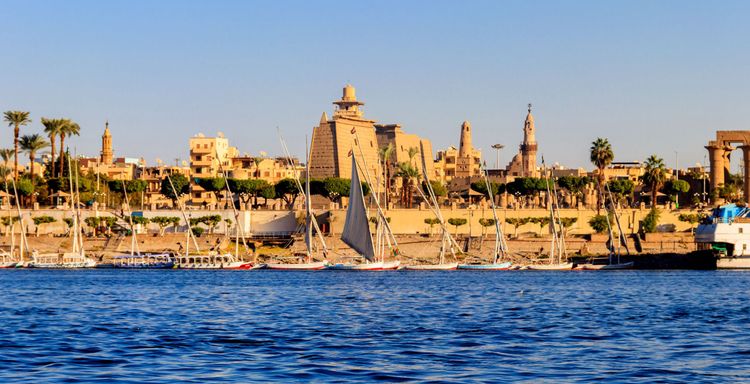These temples are that of Queen Hatshepsut, the Ramesseum or Temple of the Millions of Years of Ramses II, the Temple of the Millions of Years of Amenhotep III, whose presence is marked by the two Colossi of Memnon, the Temple of the Millions of Years of Seti I and the Temple of the Millions of Years of Ramses III, at Médinet Habou, very close to Luxor.
These temples form part of the few square kilometres that make up the Theban Necropolis, opposite Luxor on the west bank of the Nile. If it's not too hot and your hotel is on the same bank, the west bank, you can walk to them. Cycling is no problem, but never leave home without water.
